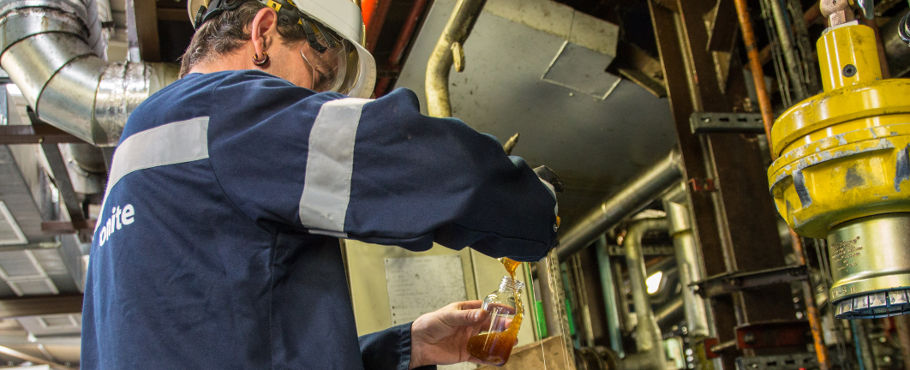Storage, Stability and Estimated Shelf Life of Finished Lubricants
Most materials deteriorate over time, including finished lubricants. That is why knowing what to look for in lubricants, including their shelf life, is critical in...
There’s often confusion about the American Petroleum Institute (API) classifications used for gearbox or transmission oil specifications. Therefore, individuals responsible for selecting lubricants need to fundamentally understand how to specify lubricants for gearing. This article specifically looks at the API GL-4 and API GL-5 classifications and the difference between them.

When selecting lubricants for industrial gearing, you need to consider numerous factors beyond choosing a product from the maintenance manual’s qualified products list. These include availability, operating conditions, preferred lubricant brand, and product consolidation efforts. So how, then, do you know which lubricant is the best for a given application?
Many years ago, a phosphorous additive with active sulphur replaced effective yet environmentally unfriendly lead additives for gear oils. It worked like this: the sulphur attaches to the gears to create a solid sacrificial layer of material that can wear off, thereby protecting the gear surface. However, maintenance personnel later discovered that the active sulphur was causing corrosion to brass and other yellow soft metals used in differentials and transmissions. This led to the development of deactivated or buffered sulphur that would react with the phosphorous to create the protective layer in the gearboxes without being corrosive to softer metals. This additive is present in most oils today.
Classification Differences
It is also common for API G-5 oils to claim API GL-4 requirements for gear oils, generally referred to as ‘total driveline’ lubricants. However, here we’ll only discuss products that meet either API GL-4 or API GL-5 specifications, not both.
Problems arise when you try or need to use the same product in the transmission that you use in the differential. Both classifications have different properties, and incorrect use could damage a vehicle’s transmission or differential. Selecting the correct category for a specific application is therefore vital. Users often ask whether an oil that meets API GL-4 or API GL-5 is also suitable for use in a synchromesh or synchronised transmission. The answer is an emphatic ‘no’, since the classifications refer to the gear oil specifications and not the transmission specifications. In other words, the categories have nothing to do with transmission synchronisers.

The designation API GL-4 denotes lubricants intended for axles with spiral bevel gears operating under moderate to severe conditions of speed and load, or axles with hypoid gears operating under moderate speeds and loads. Conversely, API GL-5 represents lubricants intended for gears, particularly hypoid gears, in axles operating under various high-speed and shock load combinations, or low-speed and high-torque conditions.
In general, the higher an oil’s GL rating, the higher the extreme pressure (EP) protection provided, so more pressure can be sustained without any metal-to-metal contact between transmission components. Viscosity has no relation to the API Gear Oil Classification, and users should follow the recommendations from the OEM.
Extreme Pressure Additives
The main difference between API GL-4 and GL-5 gear oils is the number of EP additives, with sulphur/phosphorus possibly the most common of these. GL-4 products typically use about half the sulphur/phosphorus additives of their GL-5 counterparts. Hence, operators often use the latter in high-pressure applications, such as in a front axle and rear axle differential. The sulphur/phosphorous additive forms a black sacrificial coating on the gear in these conditions. As the gears turn, the sacrificial coating wears off, rather than the gears themselves.
However, the higher concentration of sulphur/phosphorus in API GL-5 could spell disaster for the synchromesh rings of a gearbox because of the additive’s aggressive reaction to bronze and copper. Used oil analysis reveals two to four times as much copper in the used oil of a GL-5 product than a GL-4 product. This is due to the API GL-5 product attacking the copper synchronisers and causing premature wear.

So, while an API GL-5 gear oil can be utilised in an application requiring manual transmission fluid, there will be a trade-off. You can anticipate excellent protection for the gears but also a reduction in synchroniser life if these components are made of softer materials. Therefore, using an API GL-5 in a transmission isn’t recommended unless the manufacturer allows it.
Generally, it’s safe to assume that a modern transmission would require an API GL-4 product and axles and differentials an API GL-5 equivalent. However, it would be best to always heed the specific lubricant quality recommendations of the equipment manufacturer.
For more information or questions about our extensive range of API GL-4 and API GL-5 products, please contact our technical team.
Most materials deteriorate over time, including finished lubricants. That is why knowing what to look for in lubricants, including their shelf life, is critical in...
Finished lubricants keep the world running, ensuring performance and safety in a vast range of dynamic, high-temperature applications. But as dynamic as these...
Copyright © 2025 Astron Energy (Pty) Ltd.
All rights reserved. The Caltex mark is owned by Chevron Africa – Pakistan Services (PTY) Ltd. Under License to Astron Energy (Pty) Ltd.